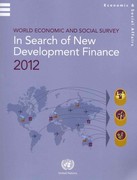Answered step by step
Verified Expert Solution
Question
1 Approved Answer
In an attempt to cling to his joyful college days, Jerry consumes only cold cereal (C) and hot so good your knees buckle soup (S)
| In an attempt to cling to his joyful college days, Jerry consumes only cold cereal (C) and hot "so good your knees buckle" soup (S) from down the street. Thanks to the law of diminishing returns, his marginal rate of substitution between the two is MRS=2C/S. [In this context, the MRS is the amount of cereal he must give up to stay indifferent if he is given an additional serving of soup. For example, if Jerry consumes 4 cereals and 2 soups, he is willing to give up 4 cereals (2*4/2) to get 1 additional soup.] Cereal costs $2 per serving (PC = 2), while soup costs Jerry $8 per serving (PS = 8). |
| 1.1. | Does the trade-off implied by the MRS strike you as reasonable? (Consider when Jerry has a lot of soup but little cereal and conversely.) Why or why not? | ||||||||||||
|
Step by Step Solution
There are 3 Steps involved in it
Step: 1

Get Instant Access to Expert-Tailored Solutions
See step-by-step solutions with expert insights and AI powered tools for academic success
Step: 2

Step: 3

Ace Your Homework with AI
Get the answers you need in no time with our AI-driven, step-by-step assistance
Get Started


